Why Most Operating Models Fail
A concise comparison of the Industrial and Agile Product Operating Models, explaining why traditional structures fail in dynamic markets and how …
A focused operating model for any unit whose primary value is delivered through a product. It describes how the unit structures its work, decisions, and learning to maximise product outcomes, whether the scope is a single team, a multi-team group, or an organisation.


A product operating model defines the foundational structure for how an organization consistently delivers value through its products. It sets out the roles, responsibilities, processes, and enabling technologies that connect product strategy to execution, ensuring teams have the clarity and autonomy needed to make decisions and adapt quickly.
Unlike frameworks or methodologies such as Scrum or Kanban, which focus on team-level practices, the product operating model addresses the broader, systemic enablers, governance, funding, cross-team alignment, and lifecycle management, that underpin sustainable product delivery. It clarifies how priorities are set, how work flows from idea to customer, and how feedback loops drive continuous improvement.
By establishing clear boundaries for ownership and accountability, it reduces friction and ambiguity, allowing teams to focus on outcomes rather than navigating organizational silos. This long-term, systemic approach is essential for scaling agility, supporting innovation, and maintaining a predictable cadence of value delivery, even as market conditions or organizational structures evolve.
A well-designed product operating model typically addresses:
Organizations may adopt specialized approaches based on their delivery philosophy and product characteristics:
Agile Product Operating Model : Integrates agile methodologies with product management principles, emphasizing iterative delivery, continuous feedback, and evidence-based decision making. This specialization is recommended for most modern product organizations.
AI Product Operating Model : Addresses the unique requirements of AI-powered products, including data governance, model lifecycle management, ethical considerations, and rapid experimentation cycles.
A well-designed product operating model is not a static blueprint but an evolving framework that adapts to learning, customer feedback, and shifts in strategic direction. It ensures that product teams remain empowered and aligned with the organization’s purpose while continuously optimizing for flow, quality, and customer impact. This adaptability is what distinguishes a true operating model from rigid processes or temporary initiatives, it provides the stable foundation that enables continuous change and improvement.
A concise comparison of the Industrial and Agile Product Operating Models, explaining why traditional structures fail in dynamic markets and how …
Explains why dependencies are a sign of poor system design and outlines steps to eliminate them by aligning teams, clarifying ownership, and …
Explores how effective capacity planning shifts focus from individual hours to system-level flow, using Lean and Agile principles to improve …
Explores how rigid, hierarchical structures hinder organisational agility and offers practical strategies for shifting to decentralised, empowered, …
We partner with businesses across diverse industries, including finance, insurance, healthcare, pharmaceuticals, technology, engineering, transportation, hospitality, entertainment, legal, government, and military sectors.

Graham & Brown
Boxit Document Solutions

Milliman

YearUp.org

Alignment Healthcare

Workday

Big Data for Humans

Bistech

Qualco

Teleplan

Flowmaster (a Mentor Graphics Company)

Brandes Investment Partners L.P.

Emerson Process Management

Philips

ProgramUtvikling

Deliotte

ALS Life Sciences

Higher Education Statistics Agency

Washington Department of Enterprise Services

New Hampshire Supreme Court

Ghana Police Service

Washington Department of Transport

Department of Work and Pensions (UK)

Royal Air Force

Flowmaster (a Mentor Graphics Company)

ProgramUtvikling

Brandes Investment Partners L.P.

Graham & Brown

Lean SA

Jack Links